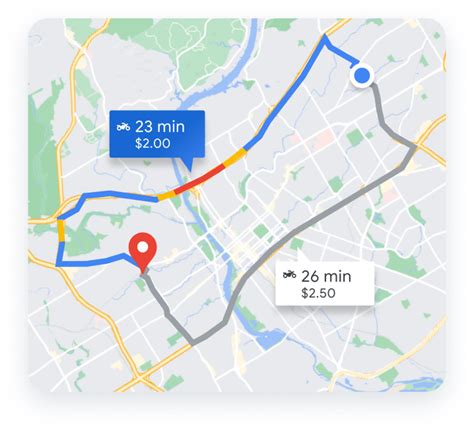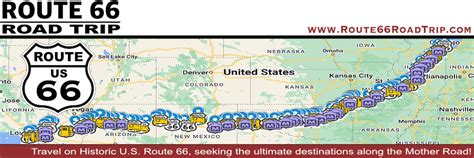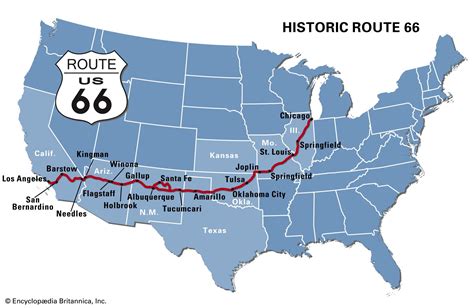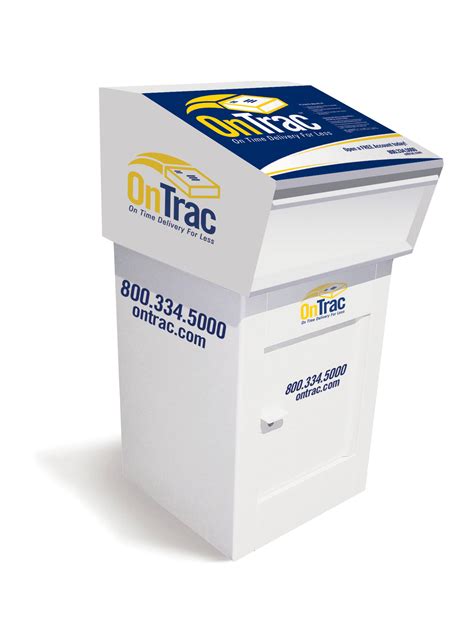Map Out A Route

Mastering the Art of Route Planning: A Comprehensive Guide

Welcome to the ultimate guide on mastering the art of route planning. Whether you're an outdoor enthusiast, a professional navigator, or simply someone looking to embark on an adventure, understanding the intricacies of route planning is essential. This guide will delve deep into the world of route creation, covering everything from the initial stages of planning to the execution of your carefully crafted journey.
In today's world, where exploration and discovery are at our fingertips, the ability to map out a route efficiently and safely is a valuable skill. From hiking trails to road trips, from cross-country expeditions to urban navigation, this guide aims to provide a comprehensive toolkit for anyone seeking to navigate with precision and confidence.
Chapter 1: Understanding the Fundamentals of Route Planning

Route planning is more than just a list of destinations and waypoints. It is an art that involves careful consideration of various factors, each playing a crucial role in the success of your journey. In this chapter, we will explore the fundamental principles that form the backbone of effective route creation.
The Importance of Clear Objectives
Every journey begins with a purpose. Whether it's a quest for breathtaking views, a desire to explore hidden gems, or a need for efficient transportation, defining your objectives is the first step in route planning. Clear objectives not only guide your decision-making process but also ensure that your route aligns with your goals, making the entire experience more fulfilling.
For instance, if you're planning a hiking trip, your objectives might include reaching a specific summit, discovering unique wildlife, or simply enjoying a tranquil walk amidst nature. These objectives will influence the type of route you choose, the pace of your journey, and the overall experience you'll have.
Researching and Gathering Information
Thorough research is the cornerstone of successful route planning. In today's digital age, a wealth of information is readily available at our fingertips. From online maps and GPS devices to guidebooks and local knowledge, there are numerous resources to tap into.
When researching, consider the following aspects:
- Terrain and Environmental Factors: Understand the terrain you'll be navigating, including elevation changes, potential hazards, and weather conditions. This knowledge is crucial for assessing the difficulty of the route and ensuring your safety.
- Points of Interest: Identify landmarks, natural wonders, and notable locations along your route. These points of interest can enhance the enjoyment of your journey and provide memorable experiences.
- Access and Logistics: Research the accessibility of your starting point and the availability of transportation or accommodation along the way. Consider any permits or restrictions that might apply to your chosen route.
- Local Knowledge: Engage with locals or experienced travelers who have firsthand knowledge of the area. Their insights can provide valuable information about hidden trails, local customs, and potential challenges.
Choosing the Right Tools
The tools you choose for route planning can greatly impact the efficiency and accuracy of your journey. From traditional paper maps to advanced GPS devices and smartphone applications, each tool has its advantages and limitations.
Here's a breakdown of some popular route planning tools:
| Tool | Description | Pros | Cons |
|---|---|---|---|
| Paper Maps | Traditional, detailed maps printed on paper. | No reliance on technology, easy to mark and annotate. | Bulkier to carry, may not be up-to-date, and require more effort to navigate. |
| GPS Devices | Handheld devices with GPS functionality, often used for outdoor activities. | Accurate positioning, robust design for outdoor use, and additional features like compass and altitude readings. | Can be costly, require charging, and may not have detailed map data. |
| Smartphone Apps | Applications installed on smartphones with GPS capabilities. | Widely accessible, often free or low-cost, and provide real-time updates. | Reliant on smartphone battery life, data connectivity, and may drain battery quickly. |

Chapter 2: Crafting Your Route: A Step-by-Step Guide
Now that we've covered the fundamentals, let's dive into the practical aspects of creating your route. This chapter will guide you through the process, ensuring a well-planned and enjoyable journey.
Defining Your Route Parameters
Before you begin plotting your route, it's essential to define the parameters that will shape your journey. Consider the following:
- Distance and Duration: Determine the approximate distance you wish to cover and the estimated time it will take. This will influence the pace of your journey and the level of detail required in your planning.
- Mode of Travel: Are you hiking, cycling, driving, or using public transportation? The mode of travel will impact the type of route you choose and the tools you'll need.
- Difficulty Level: Assess your fitness level and experience to gauge the appropriate difficulty for your route. This will ensure a challenging yet manageable journey.
- Accommodation and Logistics: Plan for overnight stays, transportation, and any necessary arrangements along the way. Consider the availability and suitability of accommodation options.
Mapping Your Route
With your parameters defined, it's time to start mapping your route. Here's a step-by-step guide to help you through this process:
- Choose Your Mapping Tool: Select the mapping tool that best suits your needs and preferences. Whether it's a digital platform, GPS device, or paper map, ensure it has the necessary features for your journey.
- Identify Your Starting Point: Determine your starting location and mark it on your map. This could be a specific address, a trailhead, or a notable landmark.
- Set Your Waypoints: Waypoints are key locations along your route. These could be landmarks, rest stops, or significant points of interest. Mark these waypoints on your map and consider their importance to your journey.
- Connect the Dots: Using your chosen tool, connect the waypoints to create your route. Consider the terrain, potential hazards, and any restrictions along the way. Ensure the route is feasible and aligns with your objectives.
- Review and Adjust: Take the time to review your route. Assess its feasibility, considering factors like terrain, accessibility, and potential detours. Make adjustments as needed to ensure a smooth and enjoyable journey.
Creating a Comprehensive Route Plan
A well-planned route goes beyond a simple map. It's a comprehensive guide that considers all aspects of your journey. Here's what you should include in your route plan:
- Detailed Map: A clear and detailed map of your route, including all waypoints, landmarks, and notable features.
- Elevation Profile: A graphical representation of the elevation changes along your route, helping you understand the difficulty and potential challenges.
- Timing Estimates: Approximate timings for each segment of your journey, considering factors like terrain, distance, and your pace.
- Safety Considerations: A list of potential hazards and safety precautions specific to your route. This could include information on wildlife, weather conditions, or emergency procedures.
- Accommodation and Logistics: Details of your planned accommodation, transportation arrangements, and any necessary permits or reservations.
- Emergency Contacts: A list of emergency contacts, including local authorities, medical facilities, and rescue services.
Chapter 3: Executing Your Route: Tips and Strategies
With your route carefully planned, it's time to put your plan into action. This chapter will provide valuable tips and strategies to ensure a successful and enjoyable journey.
Pre-Departure Preparations
Before setting out on your adventure, there are a few crucial preparations to make. These preparations will ensure you are well-equipped and ready for any challenges that may arise.
- Review Your Route Plan: Take the time to familiarize yourself with your route plan. Ensure you understand the key waypoints, potential hazards, and any special considerations.
- Pack Appropriate Gear: Based on your route and the expected conditions, pack the necessary gear. This could include clothing, footwear, navigation tools, first-aid kits, and any specialized equipment.
- Inform Others: Let someone know about your plans, including your route, estimated duration, and any emergency contacts. This is especially important for solo travelers.
- Check Weather Conditions: Stay updated on weather forecasts for your route. Unfavorable weather can impact your journey, so be prepared for potential changes.
Navigating Your Route
As you embark on your journey, effective navigation is key to staying on track and having a smooth experience. Here are some tips to navigate your route efficiently:
- Use Your Tools: Rely on your chosen navigation tools, whether it's a GPS device, smartphone app, or traditional map and compass. Ensure you understand how to use these tools effectively.
- Stay Oriented: Regularly check your position and orientation. Use landmarks, natural features, and waypoints to ensure you're on the right path.
- Adapt to Changes: Be prepared for unexpected changes in your route, such as detours, closures, or natural obstacles. Have a backup plan and be flexible in your navigation.
- Take Notes and Mark Progress: As you progress along your route, make notes and mark your progress. This will help you keep track of your journey and ensure you're on schedule.
Staying Safe and Adapting to Challenges
Safety should always be a top priority when navigating any route. Here are some strategies to ensure a safe and enjoyable journey:
- Know Your Limits: Be aware of your physical capabilities and the challenges your route may present. Avoid pushing yourself beyond your limits, and take breaks when needed.
- Be Aware of Your Surroundings: Stay alert and aware of your surroundings, especially in unfamiliar territories. Pay attention to potential hazards, wildlife, and any signs of distress.
- Follow Local Guidelines: Respect local regulations and guidelines. This includes understanding and adhering to any permits, trail closures, or local customs.
- Have an Emergency Plan: Prepare for potential emergencies by having a well-thought-out plan. Carry a first-aid kit, know the locations of emergency services, and be familiar with rescue procedures.
Chapter 4: Enhancing Your Route Planning Skills

Route planning is a skill that can always be improved and refined. In this chapter, we'll explore advanced techniques and strategies to elevate your route planning expertise.
Advanced Route Optimization
While basic route planning involves connecting waypoints, advanced optimization techniques can enhance the efficiency and enjoyment of your journey. Here are some strategies to consider:
- Consider Alternative Routes: Explore different route options to find the most efficient or scenic path. Consider factors like terrain, traffic conditions, and points of interest.
- Use Route Analysis Tools: Utilize specialized software or online platforms that offer route analysis and optimization features. These tools can help identify potential bottlenecks, suggest improvements, and provide detailed elevation profiles.
- Incorporate Rest Stops and Attractions: Plan rest stops and points of interest along your route. These can provide opportunities to relax, explore, and enhance the overall experience.
Customizing Your Route for Different Needs
Route planning can be tailored to suit different objectives and preferences. Here's how you can customize your route:
- Family-Friendly Routes: If traveling with children or older individuals, consider routes that are more accessible and have fewer challenges. Look for routes with shorter distances, gentle slopes, and interesting attractions.
- Fitness and Adventure Routes: For those seeking a physical challenge, create routes with varied terrain, steep climbs, and off-the-beaten-path trails. These routes can offer a rewarding sense of accomplishment.
- Cultural and Historical Routes: Plan routes that take you through areas rich in cultural or historical significance. Incorporate stops at museums, monuments, or heritage sites to enhance your journey with educational experiences.
Learning from Experience
Every journey provides an opportunity to learn and improve. Reflect on your past experiences and consider the following:
- What Worked Well: Identify the aspects of your previous routes that were successful. Was it the thorough research, the choice of tools, or the way you adapted to challenges? Replicate these successes in future planning.
- Areas for Improvement: Reflect on any challenges or mistakes you encountered. Were there route planning aspects that could have been improved? Use these lessons to refine your skills and avoid similar pitfalls in the future.
- Seek Feedback: Engage with fellow travelers and seek feedback on your route planning. Their insights and suggestions can provide valuable perspectives and help you enhance your planning process.
Conclusion
Mastering the art of route planning is a journey in itself, requiring a combination of research, creativity, and adaptability. By understanding the fundamentals, crafting well-thought-out routes, and continuously refining your skills, you can embark on adventures with confidence and a sense of exploration.
Remember, route planning is an ongoing process, and each journey provides an opportunity to learn and grow. With the knowledge and strategies outlined in this guide, you're well-equipped to create memorable experiences and navigate with precision and enjoyment.
Frequently Asked Questions
How can I choose the best mapping tool for my route planning needs?
+The choice of mapping tool depends on your specific needs and preferences. Consider factors such as ease of use, accuracy, features, and cost. Popular options include GPS devices, smartphone apps, and online mapping platforms. Evaluate their capabilities, such as real-time updates, offline functionality, and the level of detail provided. It’s often beneficial to try out a few tools to find the one that best suits your style of route planning.
What are some common mistakes to avoid when planning a route?
+Some common mistakes to avoid include neglecting to research thoroughly, failing to consider safety and environmental factors, and not setting clear objectives. Additionally, relying solely on technology without a backup plan or not accounting for potential delays and challenges can lead to difficulties during your journey. Always have a well-thought-out plan, be prepared for unexpected situations, and prioritize safety.
How can I ensure my route is accessible and suitable for my fitness level and experience?
+When planning your route, assess your fitness level and experience honestly. Research the terrain, elevation changes, and potential challenges along the way. Consider starting with routes that match your current capabilities and gradually increase the difficulty as you gain experience. Always prioritize safety and choose routes that align with your skill set and comfort level.
Are there any online resources or communities that can assist with route planning?
+Absolutely! There are numerous online resources and communities dedicated to route planning and outdoor exploration. These platforms often provide user-generated content, including route suggestions, reviews, and first-hand experiences. Websites like AllTrails, Wikiloc, and OpenStreetMap are excellent resources for discovering routes and gathering insights from fellow adventurers. Additionally, social media groups and forums can be valuable sources of information and support.
</

